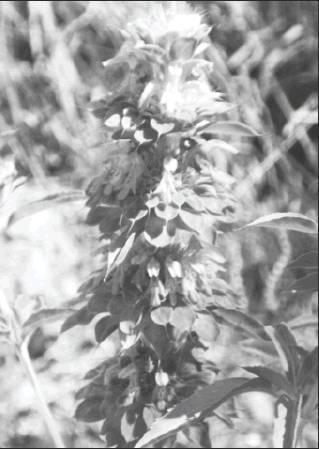Horsemint
People have asked me what the purple skinny flower is visible along the roadside. It is Horsemint (Monarda citriodora), also called Plains Horsemint, Lemon Mint, Lemon Horsemint, and Lemon Beebalm. There are many Monarda species. They are in the mint family and have square stems.
Some literature says they are easy to grow. I can get them to grow, but I find they do best in a ditch or flat area. The birds, bees and butterflies like the unusual tufts of purple/white whorled flower head. They are native annuals and are said to form masses if allowed to go to seed. The deer do not bother them and I think that is because they have a strong fragrance when crushed.
This wildflower is edible and some people put the mint-like leaves in salads for extra flavor. The leaves are also used for a tea. They grow two to three feet tall and prefer a sunny spot, but will tolerate partial shade. The seeds should be spread in the fall.
Another native wildflower that is visible along the side of the road in June is Standing Cypress. This red tall (from 3 feet to 7 feet tall) flower is not common, but I have seen it on Ranch Road 12 between Wimberley and San Marcos. Standing Cypress is a biennial, meaning it will not bloom until its second year. The deer have eaten it in my yard, but I enjoy it in the fenced in area. When I cut the top spike of tubular flowers, it branches below and blooms again. Then I let it go to seed and it reseeds itself readily. The hummingbirds love the tubular flowers. Both the Horsemint and the Standing Cypress seeds can be purchased from the Wildseed Farm in Fredericksburg.
Written by Jackie Mattice, Hays County Master Naturalist



